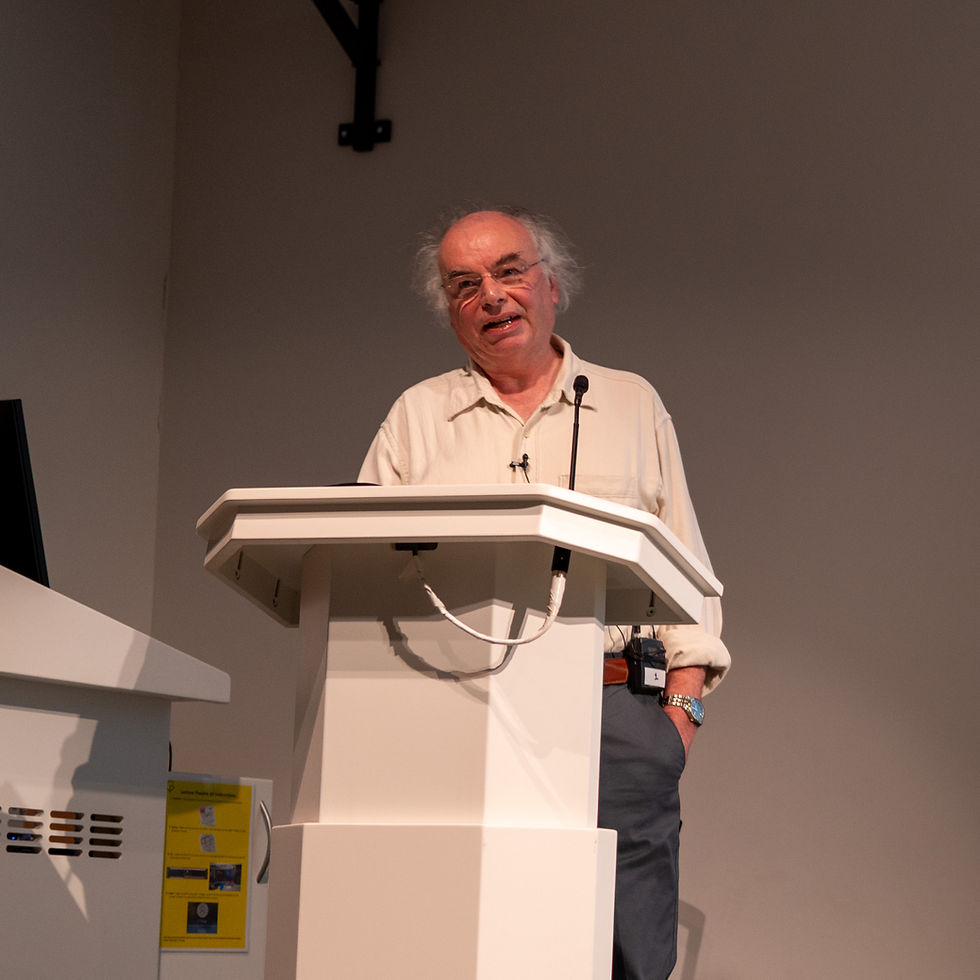Ghosts, Poltergeists, and the Law of Gravity – History of Astronomy Group Meeting
- Flamsteed Astronomy Society

- Nov 25, 2014
- 3 min read

Tony Sizer
We were a month late for Halloween but Tony Sizer nevertheless gave us a good scare with “Ghosts, poltergeists, and the Law of Gravity”.
A cynic might say astronomers are easily deceived. It seems the case that some are a bit quick to see things they want to see, especially working at the edge of observational capability.
Tony began with ‘ghosts’ – things observed but not really there. He started with the Moons of Venus. That’s right! Venus has NO moons – well, we know that now we’ve sent spacecraft to have a closer look. But over the centuries astronomers have seen plenty, and in 1884 a moon of Venus was given the name ‘Neith’ (not Keith, Neith!). I’m not going to steal Tony’s thunder. If you want the details look for yourself! Easy to scoff, but many of these observations happened with early primitive telescopes when optical ‘ghosts’ (reflections from lens elements or even the surface of the astronomer’s eyeball) could account for what was seen.
On to Saturn — yes, I know, Saturn has lots and lots of moons, with the Cassini mission finding 5 new ones before breakfast every day. But at least one has gone missing. The moon ‘Themis’ was seen by Edward Pickering, a very reliable observer using photography in 1904, and registered several times on photographic plates over some weeks. It’s not there now. Ooo! Scary!
Now for some Poltergeists. Poltergeists are things that mysteriously move other objects about, like moving sofas across the room etc. There are several cases in astronomy of things mysteriously moved from where they should be.
First, the mysterious case of Uranus (stop sniggering at the back there!). After the new planet was discovered in 1781 by Herschel, it was tracked, some old observations were re-discovered, and it was found that Uranus wasn’t orbiting the Sun according to Prof. Newton. Many theories were discussed, but the front runner was the prediction of another new planet further from the Sun and pulling Uranus off course. You can read the strange story of the prediction and discovery of Neptune for yourself, and how it caused the acute embarrassment of Sir George Airy (7th Astronomer Royal) but ended happily for us with the acquisition in 1894 of the 28-in Great Equatorial telescope at Greenwich.
Astronomers then became convinced that Neptune was also being pulled off course and searched for yet another new planet beyond the orbit of Neptune. Percival Lowell (he of Mars’ Canals fame – more ghosts?) played a leading role using his state-of-the-art observatory in Flagstaff, Arizona. It didn’t bear fruit until 1930 when Clyde Tombaugh, a young researcher at the Lowell Observatory, identified it on photo plates. Spookily, ‘Pluto’ (for such it was) is far too small and in the wrong place to account for Neptune’s ‘perturbations’… which don’t exist anyway! Scary or what!

Tony Sizer presents “Ghosts, Poltergeists and the Law of Gravity”
Finally (almost), one that’s both a poltergeist and a ghost. This is the mystery of Mercury. It’s difficult to observe Mercury which is never seen far from the glare of the Sun, so measuring orbital details very accurately took many years. By the 1840s it was known that Mercury didn’t behave according to Prof. Newton either – its perihelion (closest point of approach to the Sun) ‘precesses’ around the orbit, ie it advances round in the manner of a wobbling toy top. In Paris, LeVerrier (he of Neptune fame) carried out extensive calculations and concluded part of this effect must be due to an undiscovered planet (poltergeist?) between Mercury and the Sun. He named this planet ‘Vulcan’ (apologies to all Trekkies) and set half the astronomers in Europe off on a search to observe it. In 1859 it was reliably observed by an amateur astronomer in France. No, that’s right, it doesn’t exist! Ghost! Follow the links above to read the sad tale. In 1916 Prof. Einstein explained Mercury’s strange orbit very nicely, thankyou, without the need for Mr Spock and his kin.
We could go on and on (and Tony did). I leave it up to you, gentle reader, to do your own research on the mysterious gap between Mars and Jupiter according to the predictions of the Titius/Bode ‘law’, the gaps in the rings of Saturn (and similar gaps in the asteroid belt), Prof Lagrange and the Trojans, and the moon clouds of old Earth.
It’s a good job that today’s astronomers don’t fall prey to such ghosts and poltergeists – that would be a dark matter indeed!
Many thanks to Tony for a real tour de force.
Mike Dryland







Comments